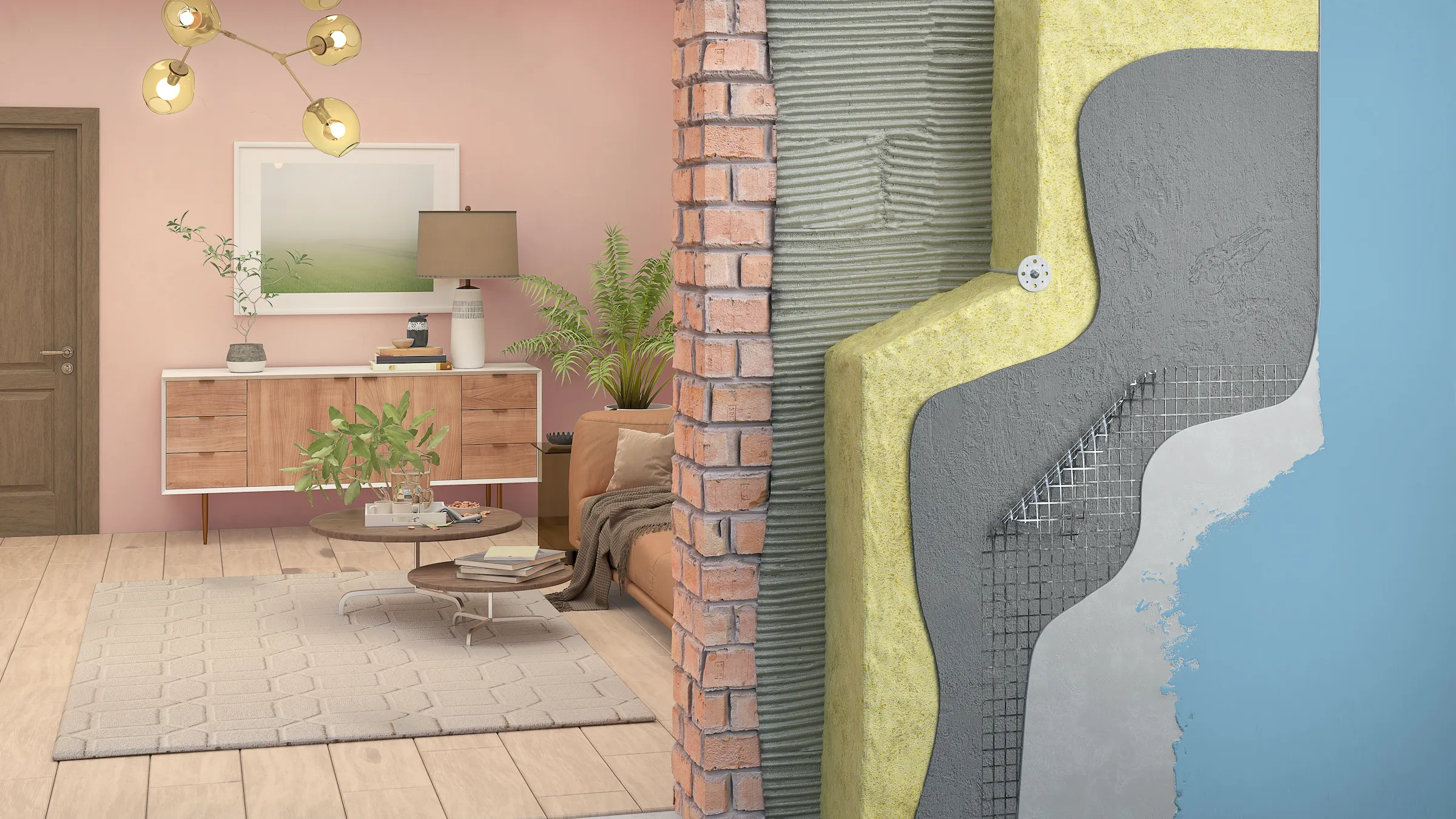Turn your existing house into an energy efficient house in 5 steps!
Not so long ago, new bathrooms and kitchens were a top priority for homeowners with renovation projects. Now energy savings are a top priority. Energy renovations are already being carried out in many homes, and it is estimated that one in three homeowners plan to carry out an energy renovation within the next five years. It is also necessary because the majority of existing homes still do not achieve a passing grade in energy efficiency. But how can you turn your house into an energy efficient home?
Step 1: Insulate the roof
Many homeowners consider energy efficiency a priority and have plans to save energy or renovate. But what first? Without a doubt, the roof. So it's best to work on this first. You can easily save 30% of energy per year. Roof insulation for pitched roofs includes:
- Interior with coating, insulation and vapour barrier.
- Exterior of the roof (under-roof): A hard insulation board on the roof.
Tip: If you are not using the attic, decide to insulate the attic floor. Roof insulation for flat roofs can be done along the top.
Note: from 1 January 2020, all roofs of houses and rental buildings connected to the grid before 1 January 2006 must be insulated. As a homeowner, you must work to bring your property into compliance yourself. Failure to comply with roof insulation standards at the time of the home inspection will result in a deduction of 9 to 15 points, depending on the size of the roof, and may even be declared uninhabitable.
Step 2: Insulating the exterior walls
If the facade and landscaping require work, it is advisable to do it at the same time. If you have a well-insulated window on an uninsulated wall, you run the risk of condensation forming on the wall. There are three methods of insulating walls:
- Insulating the outside
The solid walls of old houses are ideal for external insulation. A new finish to the facade is necessary to avoid losing interior space. Manufacturers ensure that the facade finish is as thin as possible to meet the necessary insulation requirements.
- Internal insulation
Internal insulation is only an option if cavity wall insulation or external insulation is not possible.
- Filling the cavity
The first cavity walls were built in houses built in the 1950s. If you have a clean cavity 3-6 cm wide, you can fill or blow in the cavity with insulation. What are the main advantages? Nothing has changed, neither inside nor outside, and the investment pays off after only 3 to 5 years.
Tip: Make sure the cavity is not only large enough, but also clean enough to be filled.
Step 3: Replace the window or glass
From 1 January 2020, double glazing will be mandatory. The double glazing requirements only apply to living rooms, kitchens, bedrooms and bathrooms in flats. Staircases, entrance halls and corridors do not have to be double glazed.
Surveys of houses without double glazing receive the following penalty points:
- 3 penalty points for a single glazed window
- 9 penalty points for more than one single glazed window
From 1 January 2023, the number of penalty points will be increased to 9 or 15 penalty points. At 15 penalty points or more, the government may declare the property unfit for habitation.
If the profile is in poor condition, replace the joinery and the glazing together. Finally, the U-value of the window profile (heat transmission) determines the total U-value of the window.
If the profile is still windproof and of good quality, it is worth replacing the old glass with high performance glass.
Tip: Check the website of your window manufacturer to find out which glass is suitable for you. Reduce street noise or block out the sun.
Step 4: Insulate the floor
If your roof and external walls are well insulated and your windows and doors are fitted with insulating glass, floor insulation is the fourth step to fully insulating the external envelope of your home.
How do you achieve the ideal Umax value of 0.24 W/m²K?
The floor itself should be insulated with insulation boards at least 10 cm thick with a lambda value of 0.022 W/m²K.
Insulate basement ceilings with mineral wool ≥ 14 cm with a lambda value of 0.032 W/m²K or insulation board thickness ≥ 10 cm with a lambda value of 0.022 W/m²K.
Tip: there are two ways to insulate your floor: from above and from below. The bottom is much easier as it does not need to touch the existing floor. However, this solution is not always possible. In a house without a basement (crawl space), it is only possible to insulate from the top floor.
Step 5: Technology
- Replace the condensing boiler
More than half of our energy bills are spent on heating. Invest in a high efficiency boiler or heat pump for electric or gas heating. If you are planning to insulate or if your home is fully insulated and heated by underfloor heating, consider installing a heat pump.
There are three types of heat pumps:
1. Ground source heat pump: extracts heat from the ground.
2. Water source heat pump: extracts heat from water.
3. Air source heat pump: extracts heat from the outside air.
Tip: There are hybrid devices that combine heat pump, boiler and water tank to save even more energy.
- Ventilation
Ventilation systems are mandatory for new buildings. Ventilation is also recommended for existing houses which are now better insulated.
For renovations, the government distinguishes between conversions and extensions.
Tip 1: If you invest in new windows, extra ventilation grilles are a good option.
Tip 2: Ventilate and heat at the same time? What can you do? The E+ system absorbs polluted warm air and recovers it as an energy source.

